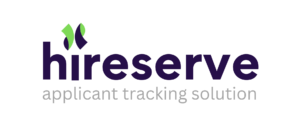HR and recruitment teams are two different departments, although their primary functions share a common goal: attracting, hiring, and retaining the best talent to drive organisational success. By working together seamlessly, HR and recruitment can streamline the hiring process, ensure a consistent candidate experience, and foster a supportive environment for new employees.
Clear Communication Channels
Regular Meetings: Scheduling regular meetings between HR and recruitment teams is essential. These meetings provide a platform to discuss ongoing hiring needs, upcoming projects, and potential challenges. Regular interactions help both teams stay aligned and address issues promptly, ensuring that everyone is on the same page.
Shared Platforms: Utilising shared communication tools and platforms such as Trello or Slack can keep everyone informed and updated on the recruitment process. These tools facilitate real-time communication, document sharing, and task tracking, making collaboration more efficient and transparent.
Feedback Loops: Establishing a feedback loop is crucial for continuous improvement. Recruiters can provide valuable insights into candidate experiences, while HR can offer updates on hiring policies and organisational changes. This two-way communication helps refine recruitment strategies and ensures that HR policies remain relevant and effective.
Read more about clear communication with candidates
Aligned Goals and Metrics
Unified Objectives: Ensuring that both HR and recruitment teams are aligned on common goals is vital. Objectives such as time-to-fill, quality of hire, and employee retention rates should be shared and understood by both teams. This alignment helps in creating a unified approach towards achieving organisational goals.
Joint KPIs: Developing key performance indicators (KPIs) that reflect the collaborative effort of both teams ensures they work towards the same outcomes. These KPIs can include metrics like hiring speed, candidate satisfaction, and onboarding effectiveness, which are critical for measuring success.
Performance Reviews: Conducting joint performance reviews can help assess how well the recruitment process aligns with HR strategies and objectives. These reviews provide an opportunity to evaluate what’s working, identify areas for improvement, and ensure that both teams are contributing effectively to the organisation’s success.
Collaborative Candidate Assessment
Structured Interview Process: A structured interview process that includes input from both HR and recruitment ensures consistency and fairness in candidate evaluation. This collaborative approach helps in assessing candidates thoroughly, taking into account both technical skills and cultural fit.
Joint Decision-Making: A structured interview process that includes input from both HR and recruitment ensures consistency and fairness in candidate evaluation. This collaborative approach helps in assessing candidates thoroughly, taking into account both technical skills and cultural fit.
Find out more about screening candidates
Streamlined Onboarding
Seamless Handover: Creating a seamless handover process from recruitment to HR is crucial for new hires. This process ensures that new employees receive consistent communication and support from the moment they accept the offer until they are fully onboarded. It helps in making their transition smooth and welcoming.
Integrated Onboarding Plan: Creating a seamless handover process from recruitment to HR is crucial for new hires. This process ensures that new employees receive consistent communication and support from the moment they accept the offer until they are fully onboarded. It helps in making their transition smooth and welcoming.
Continuous Improvement: Gathering feedback from new hires about their onboarding experience is essential for continuous improvement. This feedback can be used to refine the onboarding process, making it more effective and supportive for future hires.
Read more about improving your onboarding experience here
Leveraging Technology
ATS: Utilising an Applicant Tracking System allows both HR and recruitment to track candidates’ progress, share notes, and collaborate effectively. An ATS can streamline the hiring process, reduce administrative burden, and improve communication between teams.
Data Analysis: Using data analytics to monitor and optimise the recruitment process is vital. Data-driven insights can help identify areas for improvement, ensure alignment with HR goals, and enhance decision-making. Analytics can track metrics such as sourcing effectiveness, candidate drop-off rates, and time-to-hire, providing a clear picture of the recruitment landscape
Learn how to leverage your ATS
HRIS Integration: Ensuring that the ATS is integrated with the Human Resource Information HRIS allows for a seamless transition of candidate information and employee data. This integration helps in maintaining a consistent and accurate record of all candidates and employees, facilitating better management and reporting.
By following these tips, HR and recruitment teams can create a cohesive partnership that enhances the overall hiring process, improves candidate experiences, and contributes to the organisation’s success. This collaboration is not just beneficial but essential for building a robust and dynamic workforce that can drive the company towards its strategic goals.


